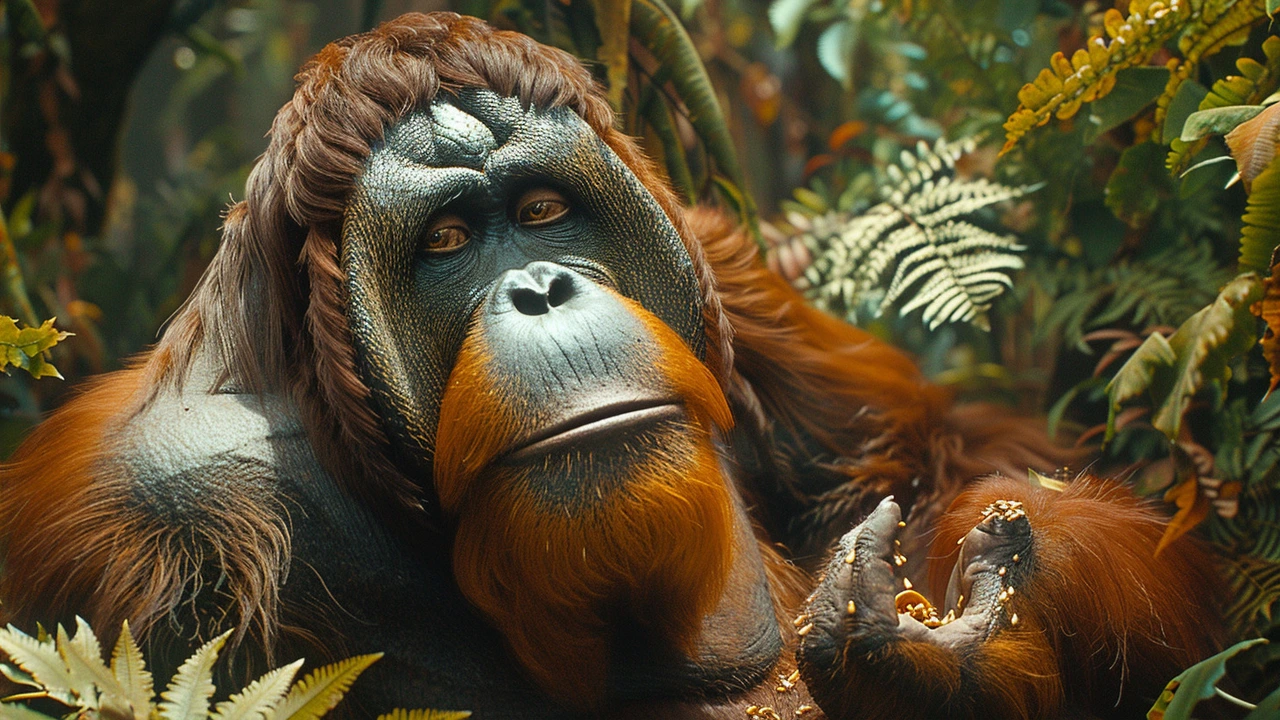
In the dense, lush rainforests of Sumatra, a remarkable event recently unfolded which challenges our understanding of animal intelligence and their use of natural resources. A Sumatran orangutan, affectionately named Rakus by researchers, has been observed directly applying natural medicine to treat a facial injury, an act that blurs the line between human and animal behavior concerning health care.
The incident, studied and documented by scientists from the prestigious Max Planck Institute of Animal Behavior, marks a significant milestone in the field of animal behavior research. Rakus was found using the plant Fibraurea tinctoria, a species recognized in local traditional medicine for its antibacterial and pain-relieving properties. This precise choice of plant by Rakus provides insight into the possibility of medicinal knowledge or instinctual medicinal use among non-human primates.
Rakus's treatment process was methodical and deliberate. He initially chewed the plant, effectively turning it into a poultice, which he then meticulously applied on his wound for approximately seven minutes. Following this, he directly placed the chewed plant fibers on the wound, maintaining it there for another seven minutes. This careful application suggests a purposeful action geared towards healing, rather than random behavior.
The healing outcome provides tangible evidence of the plant's medicinal properties from an entirely unhuman perspective. Over the span of the following week, researchers observed a noticeable improvement in the wound's condition, ultimately healing—an outcome akin to what one might expect with human medical treatment.
This behavior not only provides a window into the self-care practices of our primate cousins but also adds a layer of complexity to our understanding of animal intelligence. Rakus's actions suggest a cognitive processing ability to associate specific natural resources with healing properties, a trait once considered unique to humans. The implications of such findings are vast, raising questions about the evolution of medicinal knowledge and the potential conservation of this knowledge by other species.
In light of Rakus's actions, the research team is now intensively monitoring the orangutan group to identify if this behavior is an isolated incident or part of a wider practice among Sumatran orangutans. This continued study could unveil patterns of medicinal plant use among orangutans, offering deeper insights into the cognitive capabilities that govern such behavior.
Comparative Analysis with Human Behavior
The parallels between Rakus’s medicinal practices and human applications of traditional medicine are striking. In many cultures, humans use similar techniques, creating poultices from plants known to have medicinal benefits, applying them externally to wounds. Rakus's methodical approach to self-treatment brings to light the cognitive links that might span across species, suggesting that the roots of medicinal knowledge could be more deeply ingrained in the animal kingdom than previously believed.
Moreover, the incident fuels the ongoing debate about animal consciousness and cognitive abilities, potentially redefining the role of wildlife from passively interacting with their environments to actively using them for self-benefit in complex ways. It underlines the need for a broader perspective on animal intelligence, advocating for deeper, more comprehensive studies into how animals interact with their ecological niches.
Ecology and Conservation Implications
Beyond the immediate scientific implications, the observation of Rakus using medicinal plants has significant conservation implications. Understanding that orangutans, and potentially other species, use their habitats not just for shelter and food but also for medicine, reinforces the argument for preserving these environments. It is a powerful reminder of the intricate links between flora and fauna, and the unseen benefits they offer one another, which in turn benefits biodiversity as a whole.
The more we learn about these behaviors, the more it becomes apparent that conservation efforts should not only focus on protecting species but also the environments that house crucial medicinal plants. Such ecological underpinnings are vital for the survival and health of wildlife and are key components in their natural behavior and daily routines.
As the research community continues to unravel the depths of animal intelligence and its implications, stories like that of Rakus play a crucial role. They not only inform us about the unseen lives of animals but also challenge us to rethink our approach to the natural world. It’s a narrative that intertwines the fate of wildlife with ecological preservation and underscores the interconnectedness of life on Earth.